Growing cabbage in containers might sound like a niche pursuit, but it’s a delightful endeavor that brings fresh, crisp greens to even the smallest of spaces. Whether you’re a budding gardener or a seasoned pro, container gardening offers the perfect blend of flexibility and control, allowing you to cultivate this versatile vegetable right on your balcony or patio. With the right approach, you can turn any sunny spot into a productive mini-garden, providing a satisfying harvest of nutrient-rich cabbage heads.
Understanding the ins and outs of container gardening can transform your growing experience, enabling you to adapt to varying conditions and optimize for success. In this article, we’ll explore essential tips and tricks tailored for container growth, from selecting the right variety of cabbage to mastering watering techniques. You’ll discover how to choose the ideal soil mix, manage pests organically, and ensure your plants thrive in their confined spaces. So, whether you’re seeking to maximize limited garden areas or simply want to try your hand at something new, you’re in for an enriching journey towards a bountiful cabbage crop.
Select Suitable Cabbage Varieties
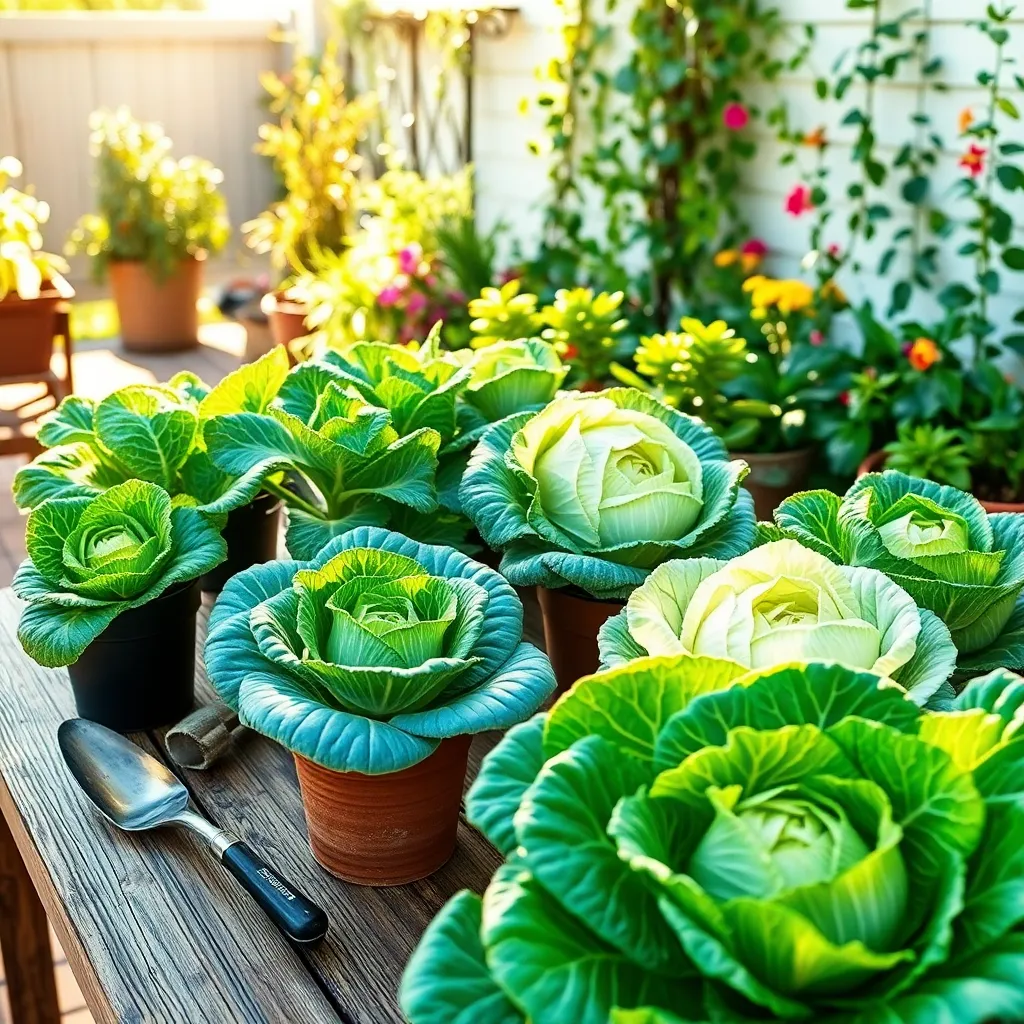
Choosing the right cabbage variety is crucial for successful container gardening. Compact varieties like ‘Golden Acre’ and ‘Red Express’ are excellent choices, as they thrive well in limited spaces.
To ensure optimal growth, select varieties that have a shorter maturity period. Varieties such as ‘Early Jersey Wakefield’ and ‘Caraflex’ mature quickly, making them ideal for container growing.
Consider the climate in your area when selecting cabbage varieties. For those in cooler climates, ‘Savoy’ cabbage varieties are particularly well-suited, offering resilience to frost.
Advanced gardeners might opt for heirloom varieties, which can provide unique flavors and textures. These can be a rewarding challenge, often requiring consistent attention to watering and soil quality to thrive.
Prepare Containers with Drainage
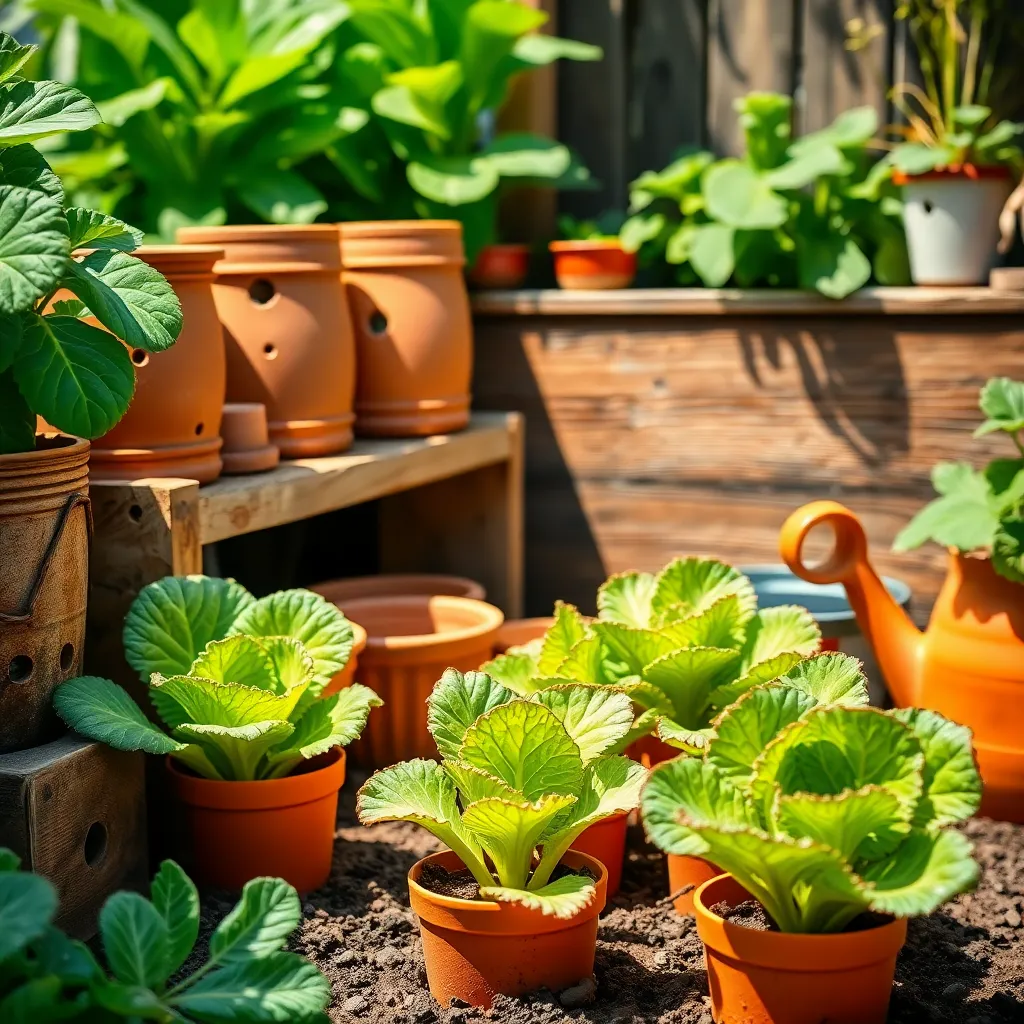
To ensure your cabbage plants thrive in containers, it’s crucial to prepare them with proper drainage. Drill several small holes at the bottom of each container to allow excess water to escape, preventing root rot and other water-related issues.
Using the right type of potting mix is essential for cabbage growth. Opt for a well-draining soil mix that retains some moisture but doesn’t become waterlogged, such as a blend of peat moss, perlite, and compost.
Consider placing a layer of gravel or broken pottery shards at the bottom of the container. This technique further enhances drainage by ensuring water moves freely out of the soil, keeping the roots healthy and oxygenated.
For those who want to go a step further, try using a self-watering container system. These containers often include a built-in reservoir that supplies water to the plant as needed, which can be especially beneficial during hot weather or for gardeners with busy schedules.
Sow Seeds at Correct Depth
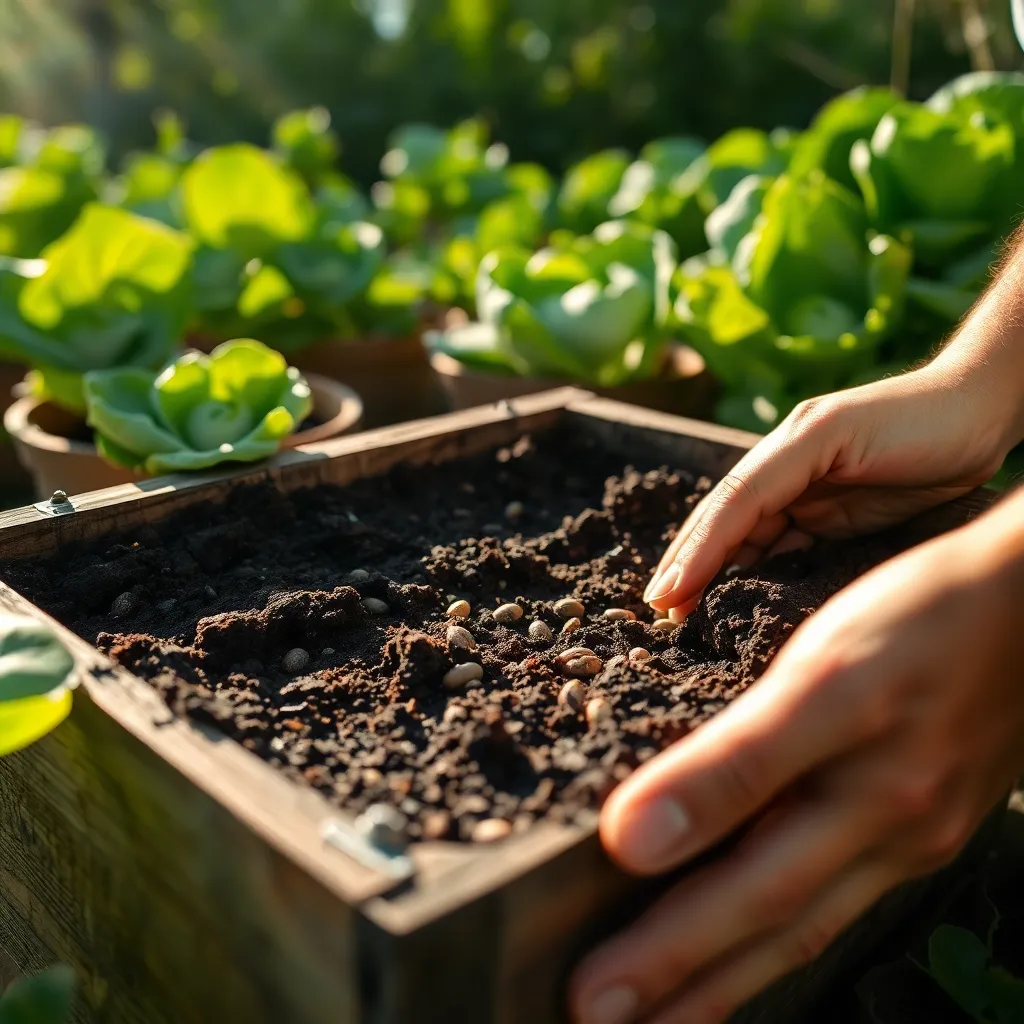
When sowing cabbage seeds in containers, it’s crucial to plant them at the correct depth for optimal growth. Generally, cabbage seeds should be sown about 1/4 to 1/2 inch deep in the soil to ensure they receive the right amount of light and moisture.
Ensure the soil is loose and well-draining before planting, as this encourages healthy root development. You can achieve this by using a high-quality potting mix that contains organic matter, such as compost or peat moss.
After sowing the seeds, gently cover them with soil and water lightly to settle the soil around them. It’s important not to overwater at this stage, as cabbage seeds require consistently moist but not waterlogged conditions to germinate effectively.
For best results, maintain a soil temperature between 60°F and 70°F to encourage rapid germination. If you’re growing cabbage in cooler climates, consider using a seedling heat mat to provide consistent warmth.
Water Consistently and Monitor Growth
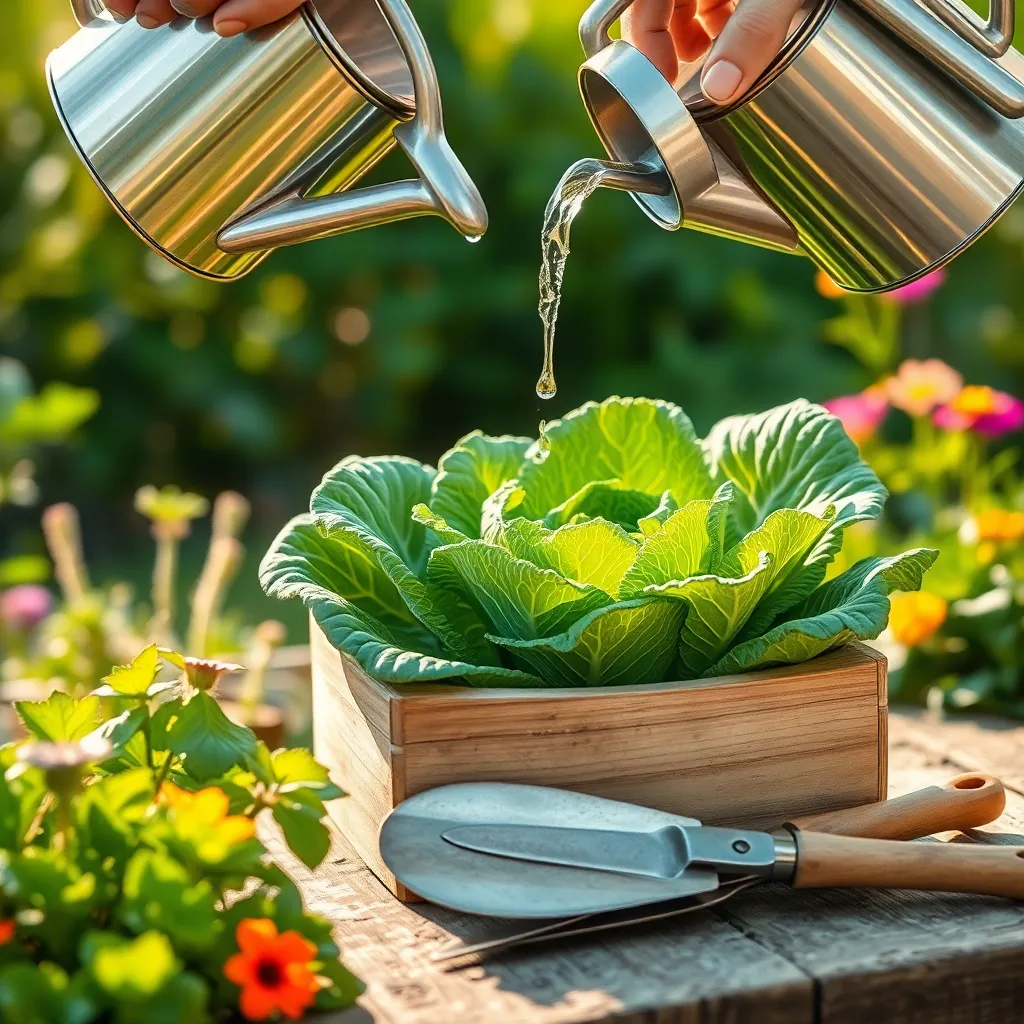
Consistent watering is crucial for growing healthy cabbage in containers. Ensure the soil remains moist but not waterlogged by checking it daily, especially during warm weather.
It’s important to water cabbage plants early in the day to allow foliage to dry before evening. This practice helps prevent fungal diseases that thrive in damp conditions.
Using a mulch layer can help retain soil moisture and reduce the frequency of watering. Organic mulches like straw or shredded leaves are ideal, as they also add nutrients to the soil as they decompose.
Monitor the growth of your cabbage plants by regularly checking for pests and signs of nutrient deficiencies. Look for common pests like aphids and cabbage worms, and address any issues promptly to maintain plant health.
Consider using a balanced liquid fertilizer every few weeks to support robust growth. This ensures your cabbage receives the necessary nutrients it might miss in container soil compared to garden beds.
Keep track of your cabbage’s progress by taking notes or photos to compare growth stages. Observing changes will help you make necessary adjustments to watering and care routines as needed.
Fertilize and Protect from Pests
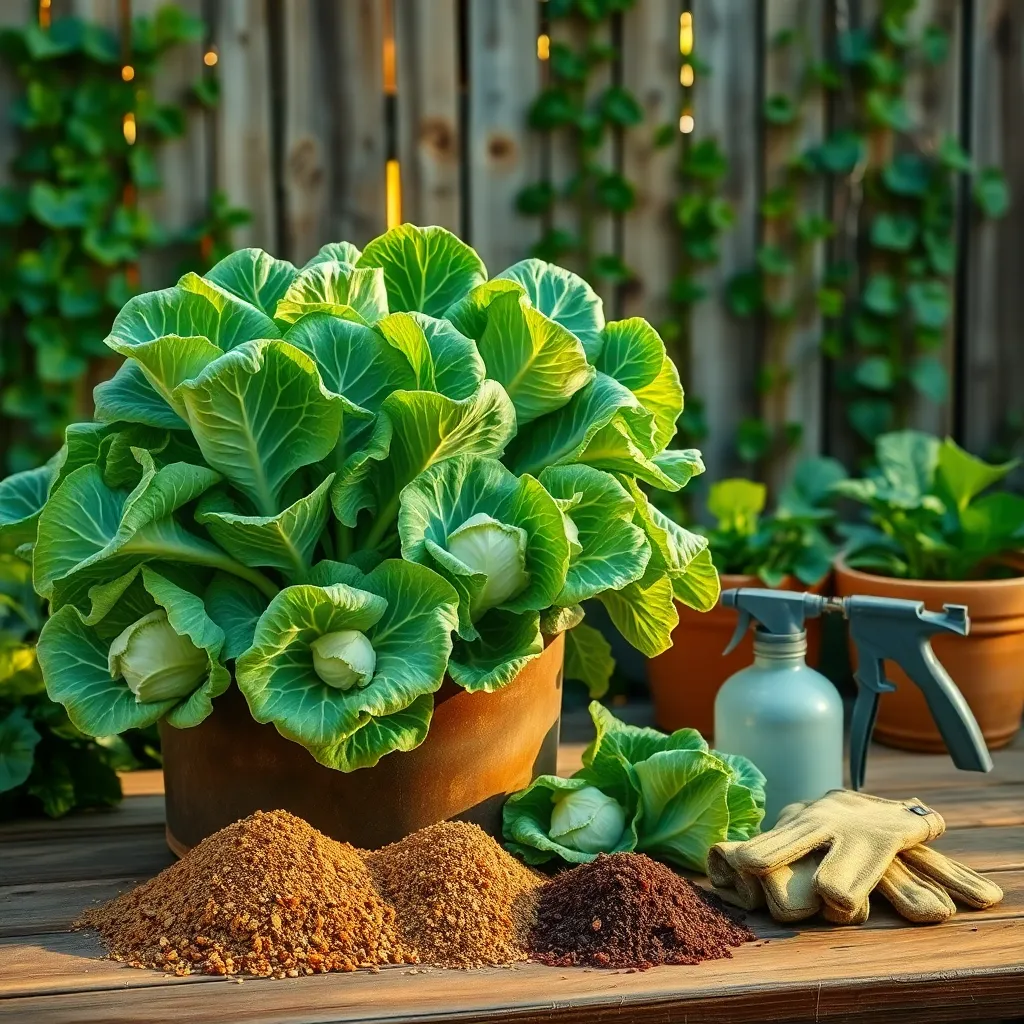
To ensure your cabbage thrives in containers, it’s essential to provide regular fertilization. Use a balanced, slow-release fertilizer or a liquid seaweed feed every four weeks to supply the necessary nutrients for robust growth.
Cabbage is a heavy feeder, and it benefits greatly from fertilizers rich in nitrogen, phosphorus, and potassium. Additionally, incorporating organic matter such as well-aged compost or worm castings into the soil mix provides a steady nutrient release and enhances soil structure.
Besides fertilizing, protecting your cabbage from pests is crucial to prevent damage. Common pests like aphids and cabbage worms can be deterred by introducing beneficial insects such as ladybugs or by applying neem oil as a natural pesticide.
For advanced pest management, consider using floating row covers to physically block pests from accessing your plants. Keep an eye out for any signs of infestation and remove any affected leaves immediately to prevent the spread of pests.
Conclusion: Growing Success with These Plants
As we conclude our exploration of nurturing relationships through the lens of growing cabbage in containers, let’s revisit the five key concepts: commitment to nurturing each other (ensuring soil quality), creating a supportive environment (choosing the right container), consistent communication (watering regularly), patience through growth phases (understanding growth cycles), and celebrating milestones together (harvesting time). Each of these principles mirrors the foundational elements of a thriving relationship.
Now, take a moment to reflect on your relationships—what small, immediate action can you take today to foster growth? Perhaps it’s a heartfelt conversation or planning a shared activity. Start nurturing your relationship garden today.
Remember, strong relationships require ongoing care and attention. Save this article as your go-to guide for relationship gardening. Bookmark it now, so you can easily return when you need a dose of inspiration or a gentle reminder of these valuable principles.
Looking ahead, embrace the journey of relational growth with optimism. By applying these nurturing strategies, you’re not just growing cabbage; you’re cultivating a flourishing future together. Take that first step today, and watch your relationships blossom.
